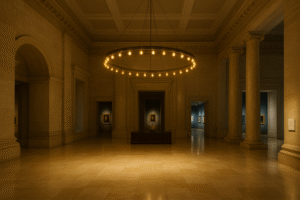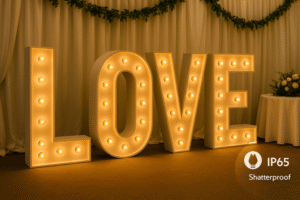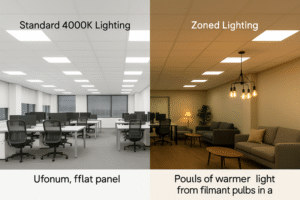You see a stunning light sculpture and wonder how it was made, assuming it requires incredibly complex, custom-made technology. You see LED bulbs as simple, functional objects, not as a medium for profound artistic expression.
Yes, artists now use LED bulbs as a primary medium, much like paint or clay. With precise control over color, brightness, and form, LEDs allow for the creation of immersive, interactive, and dynamic works of art previously unimaginable.
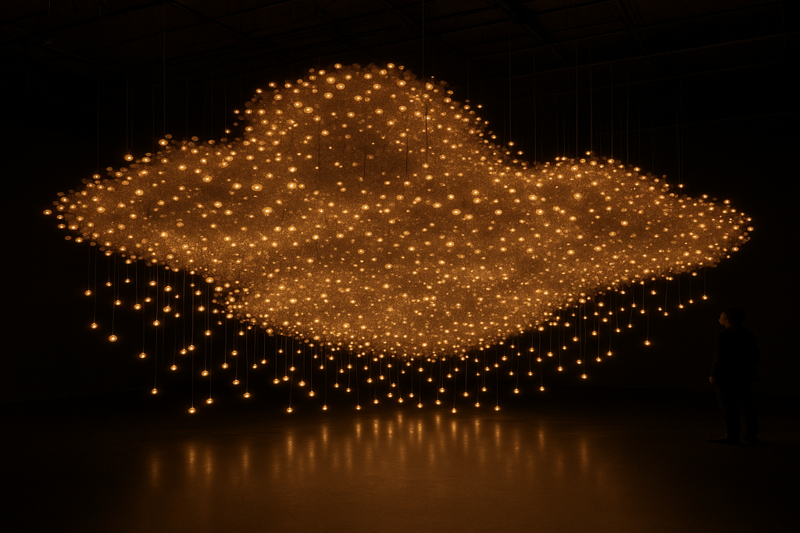
I once had a conversation with a well-known lighting designer from the United Kingdom who was planning a major public art piece. He initially dismissed our Omita LED filament bulbs, saying, "Those are for coffee shops and restaurants, not for serious art." He associated them with a specific commercial function. I understood his perspective but asked him to consider the bulb itself as a beautiful object, and its light as a controllable pixel. I sent him a case of our ST64 filament bulbs, emphasizing their perfect dimming curve and flawlessly consistent 2200K color temperature. A month later, he sent me a video of his prototype: a huge, kinetic sculpture where hundreds of our bulbs faded in and out in sequence, creating the illusion of a living, breathing entity. He realized that a reliable, high-quality "commercial" bulb was exactly what he needed for his artistic vision to succeed on a large scale.
How Do Artists Turn Empty Space into an Immersive Experience?
An artist has a vision for a piece that surrounds the viewer, but traditional spotlights and fixtures only light up objects within the space. They struggle to make the light and space become one single entity.
Artists use the sheer quantity and controllability of LEDs to "paint" with light on a grand scale. By managing thousands of individual light points, they can fill entire rooms, creating atmospheres that alter perception and evoke deep emotion.
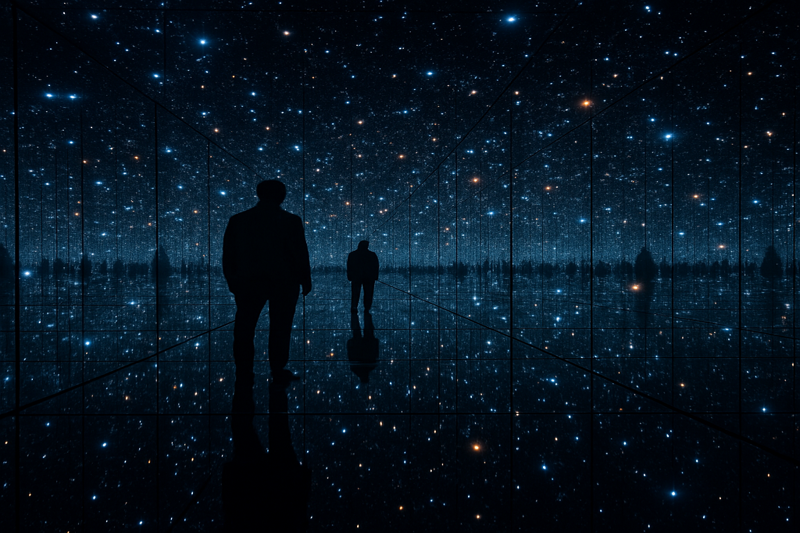
This is the evolution from lighting art to creating art with light. Trailblazing artists like James Turrell and Yayoi Kusama don't just illuminate a room; they architect it with light itself. The goal is to make the viewer feel like they have stepped inside the artwork. This requires a shift in thinking, where light is no longer a tool to see something else, but is the "something" to be seen. From a manufacturer's perspective, this type of art presents unique challenges that we are built to solve. An installation might use thousands of our G4 or G9 bulbs. If there are inconsistencies in color temperature or brightness between bulbs, the illusion is shattered. The artist needs every single bulb to be a perfect, identical pixel. Our strict quality control, honed over 30 years, ensures this level of reliability, which is why designers of large-scale projects partner with us. They need every pixel in their masterpiece to be flawless.
Crafting Atmosphere with Color and Intensity
The most direct way artists control a space is through color temperature1 and brightness. A room bathed in the deep, warm 2200K glow of filament bulbs can evoke feelings of nostalgia, comfort, and primal safety. In contrast, a space filled with cool, 4000K clinical white light can feel futuristic, sterile, or challenging. By slowly dimming or brightening the entire space, the artist controls the energy and drama of the experience.
Altering the Perception of Space
Light can manipulate our sense of dimension. An installation that uses bright light on distant walls and dimmer light up close can make a room feel larger than it is. Conversely, using vertical lines of light can make a ceiling feel higher. Artists use these optical illusions2 to disorient and reorient the viewer, making them question their own perception of the physical environment and creating a more memorable and profound experience.
Using Light to Tell an Emotional Story
Artists use transitions in light to create a narrative arc. An experience might begin in total darkness, representing chaos or birth. Slowly, thousands of tiny points of light might fade in, creating a sense of wonder and discovery. The light might then shift colors, building to an intense, vibrant crescendo before fading back to a single, warm bulb. This is storytelling without words, using only the fundamental language of light.
Can an Art Installation Actually Respond to Its Audience?
An artist envisions a dynamic sculpture, one that changes and evolves. However, traditional programming results in a repetitive loop that, while beautiful, feels lifeless and disconnected from the viewer.
Yes, by integrating LEDs with sensors and control systems like DMX, art can become interactive. Installations can now react in real-time to a person's movement, sound, or even biological data, creating a unique, personal dialogue with the viewer.
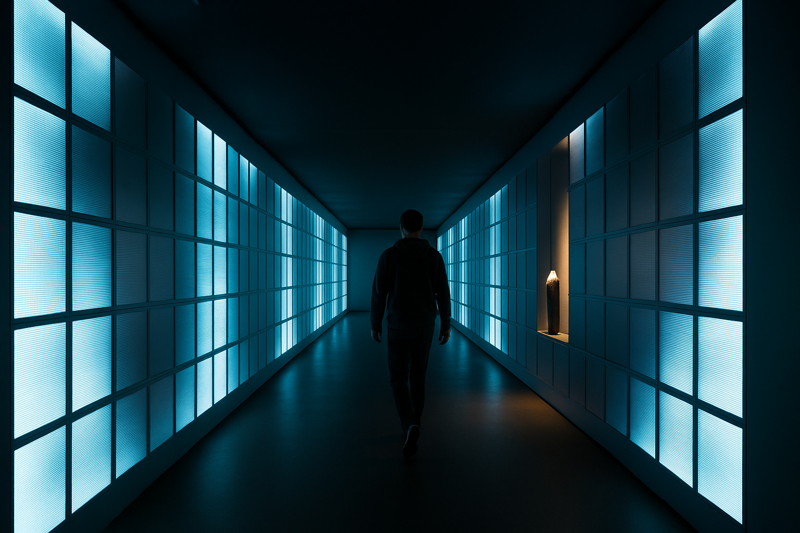
This is where LED technology truly separates itself from any previous lighting medium. It's the difference between a painting and a conversation. The ability to control every single bulb individually and instantly allows artists to connect their work to the living world. The artwork stops being a static object to be observed and becomes a dynamic partner in an experience. When a creative agency in the Netherlands approached us for a corporate lobby installation, this was their exact goal. They wanted something that made visitors feel "seen." We worked with them to supply smart-enabled LED modules that were tied to motion sensors. As visitors walk through the lobby, a gentle wave of light follows them, creating a moment of surprise and delight. This is possible because modern LEDs are essentially digital devices—they can receive data and respond. The key is having a robust, reliable light source that can handle constant, rapid changes without failing.
The Technology of Interactivity
The magic behind interactive art is usually a control protocol like DMX (Digital Multiplex)3 or a series of microcontrollers like Arduino. DMX is the standard in theatrical lighting, allowing for centralized control of hundreds or thousands of individual lights. Each light or group of lights is given an "address," and the central controller sends it commands for color, brightness, and timing. This is then linked to input from sensors.
Creating a Dialogue with the Viewer
| Sensor Type | Viewer's Action | Artwork's Reaction | Artistic Effect |
|---|---|---|---|
| Motion Sensor | Walking past a wall | Light follows the person's path | Acknowledges presence, creates connection |
| Microphone | Speaking or clapping | Light pulses or changes color with sound | Converts sound to a visual medium |
| Proximity Sensor | Reaching a hand out | A section of the art glows brighter | Invites touch, creates intimacy |
| Thermal Camera | A crowd gathering | Colors shift from cool blue to warm red | Visualizes collective human energy |
From Responsive to Generative Art
The next level of interactive art is "generative." Here, the installation is not just responding to simple presence, but to complex data streams. An artist might connect the lighting to a live weather feed, where the colors and movement of the light sculpture reflect the storm rolling in outside. Others have connected installations to live stock market data or social media trends, creating a constantly evolving, never-repeating piece of art that visualizes the unseen data that surrounds us.
Does the Physical Form of the Bulb Limit Creativity?
An artist wants to create a delicate and intricate light sculpture, but they picture industrial-looking lamps or bulky fixtures. They worry that the hardware itself will be clumsy and detract from their artistic vision.
No, the form of the bulb is now part of the art. With diverse options from minimalist G4 capsules to elegant LED filaments, artists choose the bulb itself as a deliberate aesthetic component, celebrating its form rather than hiding it.
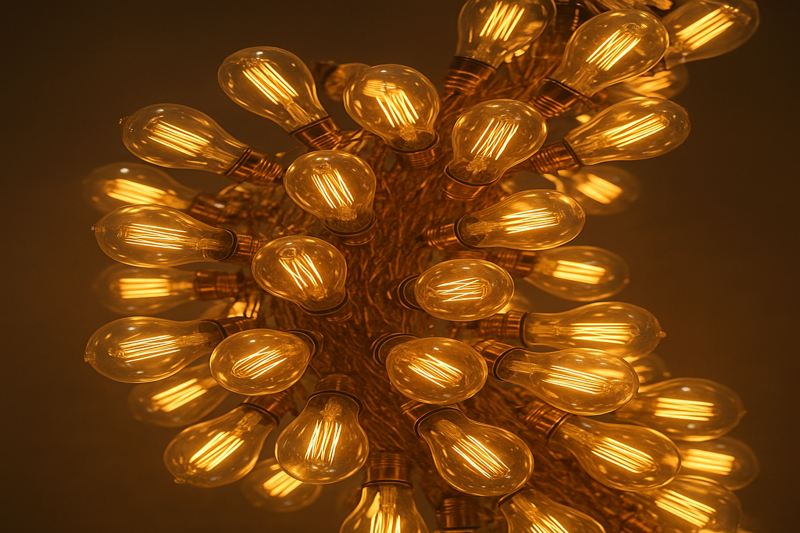
This is a point I am especially passionate about and one that has come up in many conversations with designers and buyers like Jacky. For decades, the goal was to hide the lightbulb. The fixture got all the attention. The LED revolution changed that completely. Now, the bulb itself can be the star. Our LED filament bulbs are a perfect example. We painstakingly designed the internal LED filament to replicate the delicate, warm beauty of early Thomas Edison bulbs. Artists don't hide these in a lampshade; they use them by the hundreds, exposed, to create stunning visual textures. Similarly, the tiny size of our G4 and G9 bi-pin bulbs allows for the creation of intricate, jewel-like constellations of light that would be impossible with larger, clunkier bulbs. The bulb is no longer just a light source; it's a design element, a pixel, a building block for the artist's imagination.
The Filament Bulb as a Nostalgic Pixel
The LED filament bulb4 taps into a deep sense of nostalgia and warmth. Artists use this inherent emotional quality. By arranging them in grids or organic clouds, they create pieces that feel both futuristic in their scale and control, yet classic and familiar in their aesthetic. The beauty is in the object itself, and its warm light (often 2200K-2700K) is inherently pleasing and non-aggressive, inviting close viewing.
Miniaturization: Painting with Points of Light
At the other end of the spectrum are tiny capsule bulbs like the G4 and G9. Their diminutive size allows them to be embedded into other materials or clustered tightly together. An artist can create a "light fabric" by weaving these into a textile, or a "geode" of light by embedding them within a resin sculpture. Their small physical footprint gives the artist the freedom to make the light appear as if it's emanating from the material itself, a truly magical effect.
The Rise of Linear and Flexible LEDs
Beyond the bulb, flexible LED strips5 have opened another universe of possibilities. Artists are no longer constrained by individual points of light. They can now draw continuous lines of light, outlining architecture, creating flowing neon-like sculptures, or building massive video-like screens. This gives them control over light in a linear form, allowing them to literally "draw" with light in three-dimensional space.
Conclusion
LED bulbs are far more than just light sources; they are a versatile, dynamic, and expressive artistic medium. They empower artists to create immersive, interactive, and formally beautiful works of art.
Understanding color temperature can enhance your knowledge of how lighting influences emotions and atmosphere in art. ↩
Exploring optical illusions can deepen your appreciation for how artists manipulate perception and space. ↩
Explore this link to understand how DMX technology enhances interactive art experiences and its role in theatrical lighting. ↩
Explore how LED filament bulbs enhance artistic expression with their nostalgic warmth and aesthetic appeal. ↩
Discover innovative ways artists utilize flexible LED strips to create dynamic and immersive light experiences. ↩





